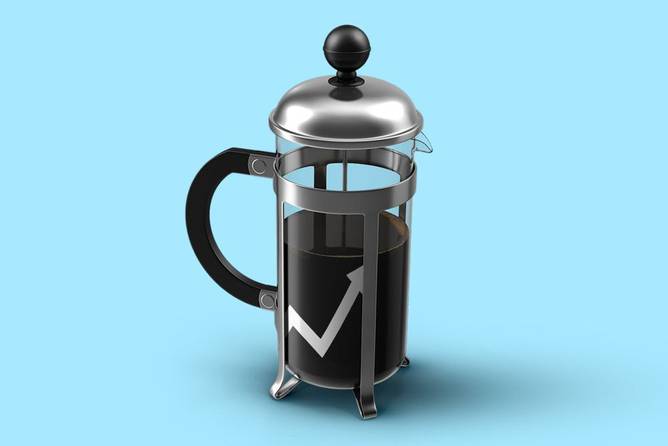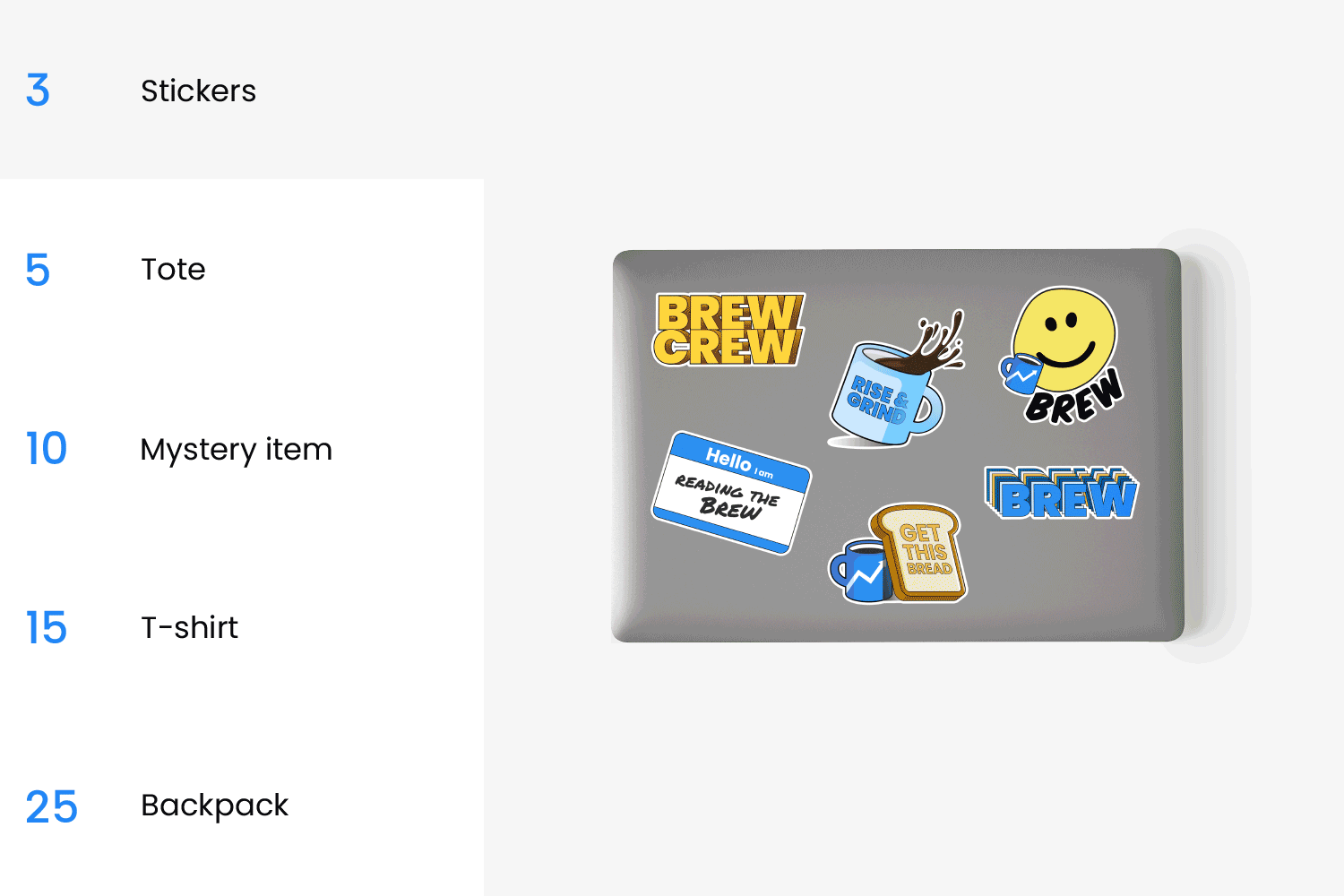|
It’s Wednesday. Walmart is rolling back investments in some DE&I programs, including winding down programs to assist suppliers that are majority-owned by women, minorities, veterans, and members of the LGBTQ community, as well as limiting third parties from selling select LGBTQ-themed items through its website.
In today’s edition:
—Katie Hicks, Ryan Barwick
|
|
Anna Kim
|
This time of year, phones are blowing up. And it’s not just exes and high school friends filling up the inbox—it’s also brands hoping to hook you on their holiday deals.
Adam Turner, co-founder and CEO of SMS marketing company Postscript, told us that in the last two weeks of November, Postscript will oversee in total “about a billion messages” sent from the more than 18,000 brands it works with.
As we approach Black Friday-Cyber Monday and head into gifting season, what can brands do to stand out and make sure they don’t get lost in the clutter? Turner shared some tips.
Early bird: In the last three years or so, Turner said he’s noticed that brands have started moving Black Friday send times even earlier, and those of us who have received ongoing sales messages all month can attest. That might not be a bad thing.
“It’s good for everyone,” he said. “Consumers aren’t inundated with [messages] and they don’t need to make a bunch of different decisions on Black Friday itself. They get to see the different sales over the course of the month.”
One of Postscript’s clients, supplement company Bare Performance Nutrition, sent a Black Friday-Cyber Monday promotional text out in mid-November that led to a million dollars in revenue, Turner said. Bare Performance Nutrition didn’t respond to a request for comment.
“It was a million-dollar text message,” he said, adding that part of what has helped its best vendors perform is by offering bundled and tiered discounts that encourage customers to buy more to increase their discount and increase average order value.
Read more here.—KH
|
|
|
The hallmark of good branding is that you can recognize it almost anywhere. But could you spot a brand logo if it was hiding in a chaotically illustrated scene à la Where’s Waldo?
That’s what Frontify did with the second edition of their “Spot the Brand” game. This time, they made three different versions (US, UK, and DACH), with 50 brands hidden in each. The catch? You’ve got only five minutes to see how many brands you can find.
This game isn’t just for fun—it also illuminates how important it is for brands to carve out a unique identity in an oversaturated market. After all, standing out is key to a brand’s long-term success.
See how many brands you can spot.
|
|
Morning Brew Design
|
For its closing argument in United States v. Google, the Department of Justice played the hits.
Since the trial kicked off in September, US District Court Judge Leonie Brinkema has heard testimony from publishers, tech executives, advertisers, Google employees, and economists, each attempting to make sense of the tangled knot called programmatic advertising.
In a final sprint held Monday in Alexandria, Virginia, lawyers with the DOJ and Google repeated much of the same arguments the court had already heard over the course of the initial three-week trial before a month-long recess.
Lawyers with the DOJ argued that Google owns the entire ad-tech supply chain, including the largest ad server and the largest exchange, as well as an untold supply of advertisers, and that by tying these together, it unlawfully choked out competition. Google is “once, twice, three times a monopolist,” DOJ attorney Aaron Teitelbaum said.
The DOJ has alleged that Google created favorable terms for itself and that it had visibility into nine out of every 10 open-web display transactions, but that those favorable terms did not extend to its customers, publishers, and advertisers.
To emphasize the point, the government referenced emails that it introduced during the trial, including one where an exec compared Google’s market position to if “Goldman or Citibank owned the NYSE” and that Google would “do to display what we did to search.”
In remarks like these, Google employees were “saying the quiet part out loud,” Teitelbaum told the packed courthouse.
Continue reading here.—RB
|
|
Silverside.AI
|
AI is coming for everything, even the Coca-Cola polar bears.
Last week, Coca-Cola joined brands like Toys R Us and Under Armour and dove into the AI ad game, this time with a series of remakes of the soft-drink brand’s nostalgic “Holidays Are Coming” spot from 1995.
Coke released three separate 60-second commercials, each produced by a different production studio, but all of which share the same smooth, AI aesthetic that, love it or hate it, has become identifiable with the technology’s use in creative production.
Silverside.AI, a creative studio born out of the indie agency Pereira O’Dell, started working on one of the ads for the campaign in June, Rob Wrubel, Silverside’s founder and managing partner, told Marketing Brew. The studio, he said, was tasked with “re-imagining and re-inspiring” the 1995 spot using “AI techniques and tools.” In other words, yeah, Coca-Cola probably knew it would stir up a reaction.
- To craft the ad, the Silverside.AI team used the AI platform Leonardo to generate images and then the AI video platforms Luma and Runway to animate them.
- Tens of thousands of image frames were created, he said, and the team opted to limit how many humans were shown, noting that the tech still has limitations with creating realistic-looking people. The other two studios, however, did include AI-generated depictions of happy (and vaguely eerie-looking) human onlookers clutching sodas.
Traditional post-production tools were used to smooth out the kinks, including nailing the iconic Coca-Cola script on the side of the delivery trucks. And the choir that’s heard singing the song’s refrain? That’s real, Wrubel said.
Read more here.—RB
|
|
It’s personal. Shopping’s biggest weekend is here—is your personalization strategy up for it? Bloomreach’s Redefining Personalization for Modern Business Growth report explores how personalization can impact your key metrics, especially during big shopping events like BFCM. Learn about AI tools, how personalization can create meaningful experiences, + more. Get the report. |
|
Morning Brew
There are a lot of bad marketing tips out there. These aren’t those.
Ch-ch-changes: Here’s the rundown on changes Meta is making to the data advertisers can collect around health and wellness categories in early 2025.
Safe house: A few brand safety best practices to inform 2025 planning.
What not to do: Kerning is more important than you might think, as demonstrated by this design choice from the Philadelphia 76ers.
No strings attached: It’s your customer data—use it how you want, when you want. A Composable CDP is integrated, flexible, and totally under your control, and this e-book from Hightouch has all the deets.*
*A message from our sponsor.
|
|
|
Stat: 83%. That’s the percentage of shoppers who said they would accept a secondhand gift this holiday season, Retail Brew reported, citing data from the resale marketplace OfferUp.
Quote: “There are hundreds of people with the exact same aesthetic, and I’m the only one that’s having to go through this.”—influencer Alyssa Sheil, speaking to The Verge about an ongoing intellectual property dispute in which she has been accused of, among other things, misappropriation of another influencer’s likeness
Read: “Inside ‘Project Black Walnut’ that sheds light on how Google thinks about Apple’s ad business” (Business Insider)
|
|
ADVERTISE
//
CAREERS
//
SHOP
//
FAQ
Update your email preferences or unsubscribe
.
View our privacy policy
.
Copyright ©
2024
Morning Brew. All rights reserved.
22 W 19th St, 4th Floor, New York, NY 10011
|
|









